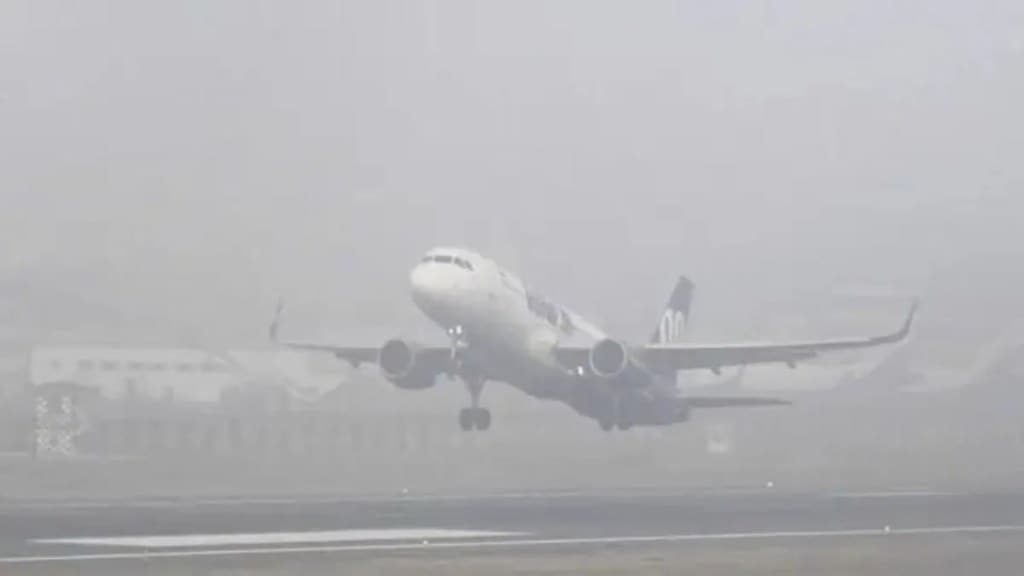Delhi Airport implemented Low Visibility Procedures on Thursday (November 14) due to poor visibility caused by dense smog and fog affecting the region. Airport officials are closely monitoring the situation to ensure safety and minimal disruption to services. The air quality in the national capital deteriorated on Thursday with the AQI in ‘severe’ category. Delhi airport authorities have advised passengers to stay in touch with their respective airlines for the latest updates on flight timings and possible delays.
“Low Visibility Procedures are in progress at Delhi Airport. All flight operations are presently normal. Passengers are requested to contact the airline concerned for updated flight information,” Delhi Airport said in a post on X.
The Indira Gandhi International Airport (IGIA), India’s busiest airport with approximately 1,400 daily flight movements, experienced significant disruptions on Wednesday. At least 10 flights were diverted, and numerous others faced delays as low visibility conditions impacted operations.
IndiGo issues passenger advisory
Meanwhile, IndiGo also issued an advisory for the passengers as smog blankets Delhi, Varanasi and Amritsar. “#6ETravelAdvisory : This morning, winter fog may impact flights to/from #Amritsar, #Varanasi & #Delhi. Do keep a tab on your flight status https://bit.ly/31paVKQ before heading to the airport. Also, please allow additional travel time as road traffic may move slower than usual due to low visibility. Thank you for your patience, and we wish you a smooth journey,” IndiGo said in a post on X.
Indian Railways train services impacted
Meanwhile, train operations were also impacted due to thick smog. “Dense fog forces trains to be rescheduled leaving passengers stranded for hours. Visuals from Anand Vihar railway station,” PTI said in a post on X.
,
A thick layer of smog blanketed the national capital as pollution levels continued to soar. At 8 a.m., the AQI in Delhi reached 428, according to the Central Pollution Control Board (CPCB). The India Meteorological Department has stated that stronger winds could help reduce pollutant levels, with the AQI expected to improve to the “very poor” category.
Wednesday marked the first time this season that the AQI reached the “severe” level, with the Commission for Air Quality Management labeling it an “episodic event” due to “unprecedented extremely dense fog.” Bhayender, a local resident, noted that the rising pollution was disrupting daily activities.

